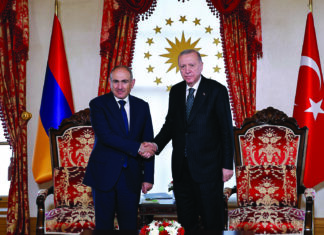New Research on Three Incidents from 2020 Conflict
By Hugh Williamson
MARTAKERT, Karabakh — Three unlawful attacks on medical facilities by Azerbaijani forces during the six-week armed conflict in Nagorno-Karabakh have come to light in recent Human Rights Watch research in the region.
Human Rights Watch documented multiple unlawful strikes on a public hospital in Martakert in September through November 2020, and an unlawful strike on a military hospital in the town’s outskirts in October. The hospitals were very close to the front lines at the time.
The weapon used by Azerbaijani forces against the military hospital — a satellite-guided variant of an Israeli-supplied rocket artillery system called LAR-160 — suggests that the strike was intentional. The strikes on the public hospital, including with Grad rockets and cluster munitions, appeared indiscriminate.
The attacks damaged both hospitals and impeded medical work, but no one was wounded or killed in the attacks.












